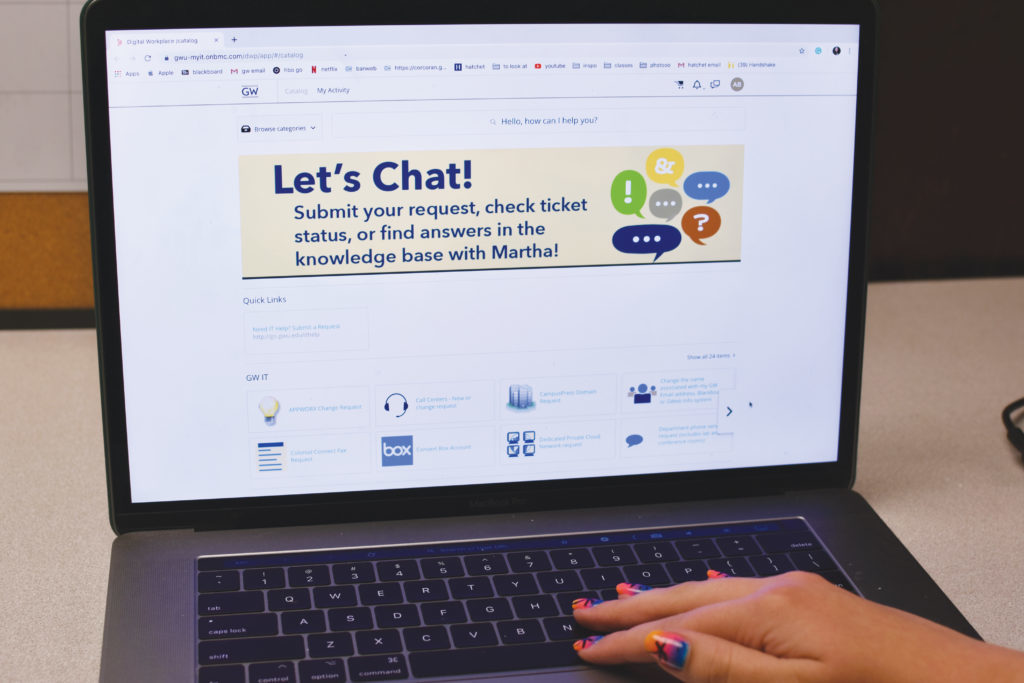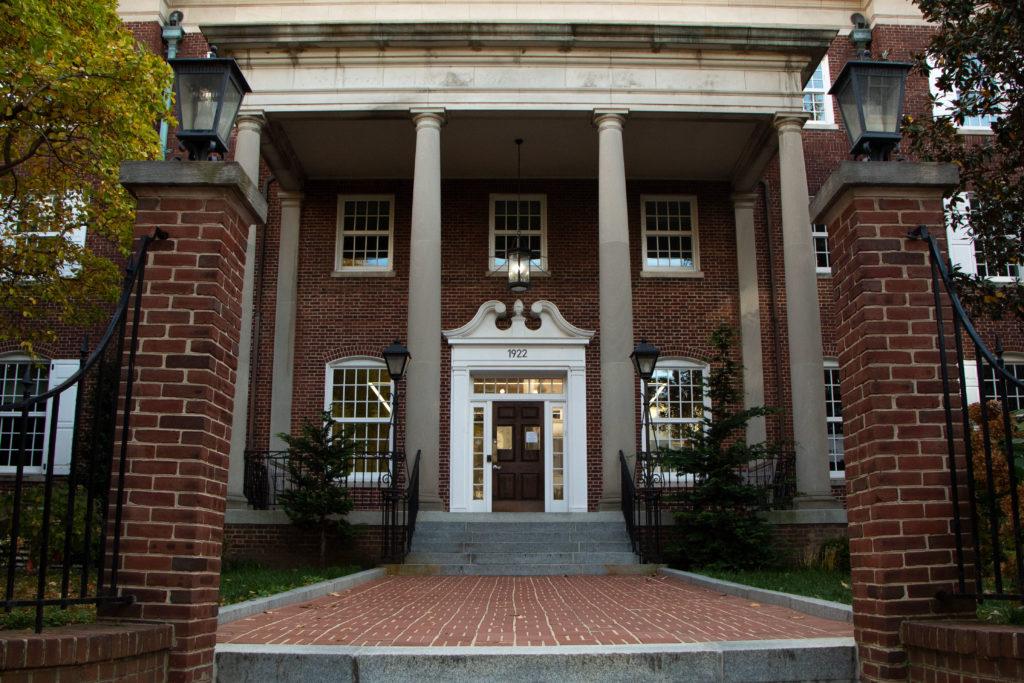A newly debuted chatbot will give students answers to common questions and help them navigate GW resources like Xfinity On Campus and FixIt.
Officials launched MARTHA last week ahead of move-in and New Student Orientation to help students glean information, submit repair requests, obtain answers to frequently asked questions and receive “step-by-step instructional support” for problems they encounter. Artificial intelligence and higher education experts said the chatbot will provide instant access to information and meet the demand for information at all hours of the day.
Administrators piloted an initial version of MARTHA last September, which allowed students to quickly access information about simple tasks, like how to reset NetID passwords. Chief Information Officer Loretta Early said in an email the bot conducted more than 4,500 conversations during the pilot, and 89 percent of respondents to a follow-up survey indicated they wanted the service to become permanent.
Early said based on student feedback, officials added functionality to MARTHA, including an auto-fill feature, the ability to connect a user to an IT employee during business hours and the ability to answer questions related to the Division of Operations, the Division of Safety and Security and the School of Engineering and Applied Science.
“The chatbot is trained to understand what a user wants in their own words,” Early said in an email. “Simply, ask a question or state a request just like you would to a live person on the phone or in-person.”
She said the chatbot can be used on Windows and Mac computers, as well as iPhones, iPods and Android smartphones. Users can text MARTHA after registering their mobile phone numbers on the desktop website.
Early added that the bot will perform better as it learns and adapts to users’ needs through AI.
“With further development, MARTHA could grow to direct students to their next class, help place an order for service in residence hall rooms or renew a library book,” Early said. “The possibilities afforded to us through AI are very exciting.”
GW is the first of its 12 peer schools to launch a chatbot to assist students, but experts in AI and higher education say chatbots are becoming increasingly common at universities as administrators realize its potential.
Phil Ventimiglia, the chief innovation officer at Georgia State University, said chatbots are capable of immediately answering students’ questions, many of which are substantially similar.
“Chatbots allow the University to increase student engagement at scale,” he said in an email. “Students can ask a chatbot questions at any time of day and receive a response in a matter of seconds.”
Ventimiglia added that the chatbot could reduce “summer melt” – a phenomenon where students accept offers of admission but fail to show up for fall enrollment – by curbing pre-college stressors during the summer that frustrate incoming students.
He said that although chatbots enable more efficient communication, they may also force administrators to rearrange staff resources to better assist students and faculty.
“Chatbots do replace the need for support staff for students,” he said. “However, this frees up the university staff to answer and address the most difficult issues.”
Jason Andracki, the associate director of marketing and communications at Allegheny College, said that while chatbots help incoming students garner information about their institution at any time of the day, they remove human interaction and can cause students to rely more heavily on technology.
“We don’t want to tie students to their phones more than they already are,” he said in an email. “But we also want to connect with them where they are.”
Mark McNasby – the chief executive officer at Ivy.ai, a chatbot development company – said that while chatbots can boost student engagement and access to resources, universities must ensure that chatbots are able to answer all types of questions.
McNasby said almost 40 percent of questions asked to chatbots developed for use in a single department are outside of the bot’s knowledge domain. He said that when a department-specific chatbot cannot answer a question, the department’s staff may feed partial or inaccurate information to the bot in an effort to answer the question going forward, passing on misinformation to current and prospective students.
“It’s critical that schools deploy bots across the entire institution,” he said in an email. “You can’t use a bot in the admissions office that can’t answer financial aid questions.”
GW’s Office of Student Financial Assistance announced in January that it would debut a 24/7 chat service this fall to provide assistance to students and families. MARTHA, an IT division project, is not currently able to answer questions related to financial aid, according to the chatbot’s website.
McNasby said officials struggle to match demand from students needing guidance and support, especially during evenings and weekends. He said chatbots can help address that demand during all hours of the day.
“The short-term goal is to increase student engagement and access to resources,” he said in an email. “Longer term, higher education institutions hope that chatbot technology will improve student enrollment, retention, and graduation success rates.”





